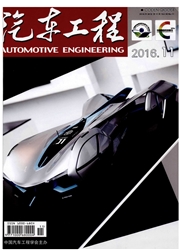

 中文摘要:
中文摘要:
通过试验获得了LPG汽车燃料供给系统中蒸发器内残留物的大量样本,对其成分和影响因素进行了试验研究。结果表明:残留物主要由高碳烷烃、酯类、单质硫、硫化铜和机械杂质等组成。其中高碳烷烃主要源于在生产或运输LPG过程中混入的重质成分;酯类主要为邻苯二甲酸二辛酯,是LPG使橡胶件溶胀而萃出的增塑添加剂,它随LPG中烯烃含量的增加而增加;单质硫直接源于原油,它影响发动机工作的可靠性,应采取措施严格控制;硫化铜是LPG中的硫及腐蚀性硫化物对铜管腐蚀而产生的,限制LPG中硫含量和铜管的使用可以有效抑制硫化铜的生成;机械杂质主要成分为灰分和其它痕量元素;高烯烃LPG通过精制加工,合理控制其成分,能够满足汽车使用要求。
 英文摘要:
英文摘要:
A great number of residue samples deposited in the vaporizer of fuel supply system in a LPG vehicle are obtained through tests and an experimental study on their composition and affecting factors is conducted. The results show that the residue mainly consists of high-carbon alkanes, esters, elemental sulfurs, copper sulfides and mechanical impurities. The high-carbon alkanes mainly come from heavy ends sneaking in during the production or transportation process of LPG. The main constituent of ester is dioctyl phthalate ( DOP), which is the plasticizer extracted from the elastomer part in fuel supply system when LPG make it swell. DOP increases with the rise of al- kene content in LPG. The elemental sulfur comes directly from crude oil and has effect on engine reliability, so measures should be taken for its strict control. The copper sulfide is the product of corrosion to copper pipe by sulfur and active sulfides in LPG. Limiting the sulfur content in LPG and the use of copper pipe can effectively restrain the generation of copper sulfide. The mechanical impurities include ash and other trace elements. Properly controling its constituent by refinement, even the LPG with higher alkene content can still meet the requirements for vehicles.
 同期刊论文项目
同期刊论文项目
 同项目期刊论文
同项目期刊论文
 期刊信息
期刊信息
